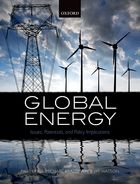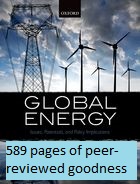“Why are you using those units for power? Why don’t you use something else?”
Is that what you’re asking? Is it?
So how about a detailed explanation of why gigawatts just rock, and all the others just get on my tit? And if that is what you are thinking, then (1) you might be a bit odd, but (2) you’re in luck:
Why gigawatts rock
It’s part of the standardised SI system of units understood around the world, and it enables numbers from different countries and different times to be compared.
Standardising on one unit of power makes a lot of sense. That is what the SI system does. Switching between mtoe/y, mboe/d, TWh/y, EJ/y, quads/y, kWh/person/d is a pain – I guess we all agree on that.
Take a 1GW power plant running at 90% load factor. How much energy does it generate if it were running in Britain today? 0.9GW. In Sweden? 0.9GW. In China? 0.9GW. In Britain in 2050? 0.9GW. What’s the average power over a day? 0.9GW. Over a year? 0.9GW. Gigawatts don’t change their value, depending on the length of time, or the size of the population you’re talking about.
If you want to understand what a gigawatt is at the personal level for every individual in Britain, it’s the equivalent of every person having a 16W fluorescent lamp switched on. Or one unit on your electricity meter for every person in your household, every two and a half days. A 1-bar electric fire for every single person in the country would be 60GW, or 24kWh/person/d, or one unit per person on your electricity meter every hour.
As context, British final energy demand in 2008 was 205GW (Digest of UK Energy Statistics 2009). If you need it in terms of power per person, that’s 82kWh per person per day, or 3.4kW per person: the equivalent of a 3-bar electric fire, and four (outlawed) 100W incandescent light bulbs, for every man, woman and child.
For average rate of energy consumption over the year, people use different units to distinguish between electrical power (TWh/y), thermal power (Quads/y), and chemical power (Mtoe/y). Those different types of power (electrical, thermal, chemical) are not directly convertible at an exchange rate of 1:1, and so there is an argument for using different units for each one. But that’s just the sort of thinking that created the mess of power units we have today.
It does make sense to pick one unit and stick to it, because that still gives you numbers that transparently make sense when you do calculations with them. For example, take a particular portfolio of installed capacity 20GWp (the subscript “p” denotes installed peak capacity, here), and a guaranteed availability of 90%, how much of peak demand can you serve? Easy: 18GW [90% of 20GWp] .
If there’s a load factor (including availability) of 70% on that 20GWp, what’s the mean power over the year? Easy: 14GW [70% of 20GWp].
Now, yes, we could convert that 14GW mean power into TWh/y by multiplying by 8.76 (unless it’s a leap year, when we multiply by 8.784). Or into kWh/person/day in Britain in 2010, by dividing by 2.5 (remember, with kWh/person/d, you always need to state place and time, because you’re factoring by population size). You could convert it into Quads/y, or indeed any type of energy per unit time: cream buns per squirrel per lunar month, if you like. But by keeping to one unit, you keep the calculations clear and transparent.
70% load factor x 20GWp = 14GW. Easy.
Same calculation, different units:
70% load factor x 20GWp = 5.6kWh/p/d or 123 TWh/y. Much less transparent.
Gigawatts rock. You know it. I know it.

